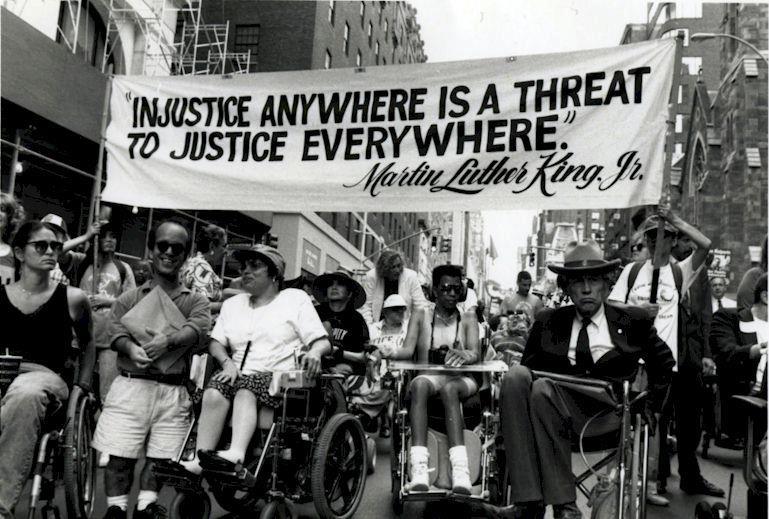Sixth “Nick’s Crusade” Video Blog from Alejandra Ospina on Vimeo.
What Life In An Institution Is Really Like, And Why This Entire Model Should Be Replaced
Writer/Director: Nick Dupree
Cinematographer: Alejandra Ospina
Video put together in Corel VideoStudio by Nick Dupree
Full transcript of the video, with links and footnotes
This is Nick Dupree for the Nick’s Crusade blog. I’ve been in the institution almost 8 months now; you see the clock tickin’ away. It’s the large hospital ventilator1, large and unnecessary, unlike the one at I had at home2. Here you see the tangle of unnecessary double limb tubes3. And that’s me.
I’m doing this blog because I want people to know what an institution is really like, and why the model is broken and needs to be replaced.
Institutions are usually large and they cost a lot to keep open. Just the cost of electricity for a giant institution will blow your mind. And then you have to pay for all the food, all the staff, the administration, the financial people to handle all the billing… like a small army has to handle the billing. And then, with something so large, there’s not enough money to hire a lot of staff for the patient care, so institutions are always going to be understaffed. You’re always gonna have, you know, 3 or 4 staff to a unit of 20 people, or maybe 2 staff to 20 people. For the nursing home part of the facility here4, you have way less than that, and what happens is you come here as a patient, and what you soon find is that there are not enough staff to go around. The staff have to take care of other patients, so you’re gonna be alone in a room most of the time. And you just hope when you ring the call bell, somebody is close enough to the nurse’s station to actually hear it.
And it’s an environment where things get missed, because there’s not enough staff. The little things that get missed… the quality of life of the patient goes through the basement. You might not be able to eat when you want to eat, because there’s not enough staff. You have to eat when there’s staff there that can help you, and that might only be an hour a day, or whatever. So things get missed. And it’s not that the nurses and the aides are bad, that’s not true at all. I’ve met a lot of good, really good nurses here, really good aides. With very few exceptions, they’re good, but they just don’t have time.
Recently, you’ve read about abuse in institutions, and the solution that the state always comes up with is: let’s increase funding, let’s give more funding for oversight. And ultimately, that’s not going to fix the problem. It’d be like giving a new paint job to a car that has no wheels. The model itself is broken.
No matter how much money you pour into these institutions, it’s not going to fix the underlying problem, and that’s segregation. Institutions segregate people and keep them stuck with no family! And no friends, or friends that have to leave after the visiting hours, and the person is left alone, and that negatively affects their recovery.
For about 17 years, I had nurses in the home setting, one-on-one care5. And when you’re severely disabled, you can’t afford to be in an institution. Although it costs exponentially more than home care, if you’re severely disabled, you can’t afford to be in a nursing home. So the entire model has to go away from outdated nursing homes, and all that money has to go into community services, or the quality of life, and the health outcomes, with infections and everything else, are going to be terrible.
Changing the system is something that this country has to do.
Footnotes
1. The Puritan Bennett 760 ventilator
2. Seems really unnecessary after using the (comparatively) much smaller LP ventilators for 14 years.
3. Seems really unnecessary after using the (comparatively) much simpler single limb circuits on the LP vents for the past 14 years. Note how the tangle of double limb tubes makes it look like I’m being attacked by the Flying Spaghetti Monster.
4. The entirety of C Building and two floors of the A Building are dedicated to the nursing home. The rest of A building are hospital units. I am in a rehab hospital unit in the A Building.
5. I naturally compare my experiences here to my life with one-on-one nursing care back home in Alabama.
